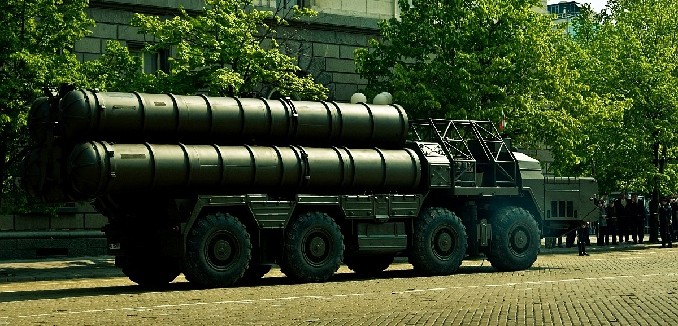Israeli Air Force Chief Amir Eshel warned today that Syria will soon receive advanced S-300 anti-aircraft missiles from Russia. The warning comes after one that Israeli officials reportedly conveyed privately to their American counterparts two weeks ago. Israeli media had already disclosed that Syrian soldiers had completed two months of training on how to use the anti-aircraft system. The intelligence indicating as much was varied but conclusive:
According to the information the Israelis provided in recent days, Syria has been making payments on a 2010 agreement with Moscow to buy four batteries for $900 million. They cite financial transactions from the Syrian government, including one made this year through Russia’s foreign-development bank, known as the VEB… Russia has been Mr. Assad’s most important international backer, outside of Iran, since the conflict in Syria started in March 2011, and supplies Syria with arms, funding and fuel. Russia maintains a naval port in Syria, its only outlet to the Mediterranean.
S-300 systems can be loaded with 48N6E2 missiles, which are considered “strategic” weapons with a maximum range of about 195 km. S-300 interceptors can outmaneuver any modern fighter, whether flying at high or low altitude, and can be used to intercept cruise missiles at ranges of up to 70 km. The system is also hardened against electronic warfare. Analysts have nearly unanimously said that a Russian transfer of S-300 would dramatically undermine the West’s ability to intervene in the Syrian conflict.
There is nonetheless some doubt whether Russia will keep its side of the deal. Russia, in 2010, reneged on a deal to supply Iran with the same weapons after pocketing nearly a billion dollars in payments. Russia may not want to risk providing the systems to Syria – only to see them defeated.
If a trasfer is made, however, Western intervension in Syria will be severely complicated. The S-300 is daunting:
The S-300 systems have been modernized repeatedly to remain state-of-the-art airplane- and rocket-destruction machines. The S-300PMU2 Favorit can launch six missiles at once and engage 12 targets simultaneously, both at high and low altitude. The missile interceptors (effectors) used by the S-300 PMU2 outmaneuver any modern fighter, including F-16, F-15, F-18 and F-22, these missiles can also effectively hit cruise missiles at ranges of 40-70km. The same unit can also employ the latest 48N6E2 missiles to intercept short and medium range ballistic missiles that would be targeting the site. This missile having a maximum range of 195km is what makes the system ‘strategic’ When covered by by point defense missile systems, such as the SA-15 Tor or SA-22 Pantsir S1, an S-300 PMU2 would be virtually immune to standoff attack by precision guided weapons. The system is also designed to operate effectively even when subjected to severe countermeasures and electronic attack, which makes it especially difficult to suppress.
[Photo: LuchezarS/ Flickr]




